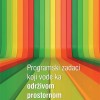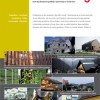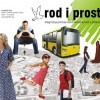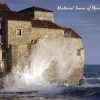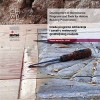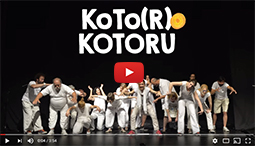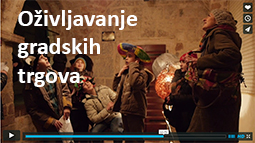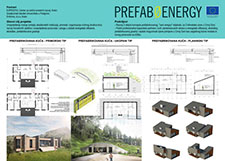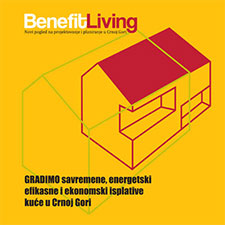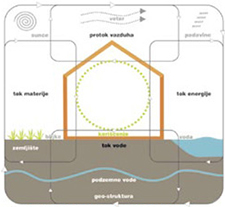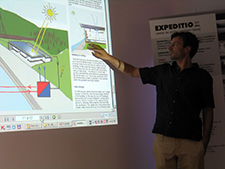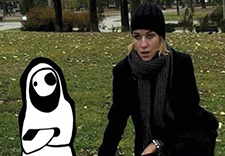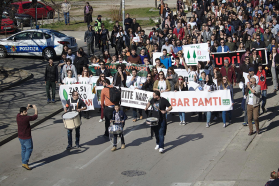 Prošle su dvije godine od kada je u centru Bara nelegalno, brzopleto i nasilno posiječen park stogodišnjih čempresa. Taj događaj rasplamsao je barsku "Čempres revoluciju" tokom koje su se građani i građanke mjesecima borili protiv daljeg uzurpiranja javnog prostora i zalagali za bolje, transparentne i participativne prakse u planiranju prostora. Povodom ove godišnjice objavljujemo odlomak koji se bavi studijom ovog slučaja, izdvojen iz knjige “Spaces of Commoning: Urban Commons in the ex-YU region”. Knjiga je, kao rezultat istraživačkog projekta grupe autorki i autora iz regiona, izašla prošle godine u izdanju beogradskog Ministarstva prostora / Instituta za urbane politike, a "Čempres revolucija" jedna je od niza urbanih praksi i borbi predstavljenih i analiziranih u njoj. Na Četvrtom crnogorskom salonu arhitekture 2020. godine nagrađena je u kategoriji "Publikacije".
Prošle su dvije godine od kada je u centru Bara nelegalno, brzopleto i nasilno posiječen park stogodišnjih čempresa. Taj događaj rasplamsao je barsku "Čempres revoluciju" tokom koje su se građani i građanke mjesecima borili protiv daljeg uzurpiranja javnog prostora i zalagali za bolje, transparentne i participativne prakse u planiranju prostora. Povodom ove godišnjice objavljujemo odlomak koji se bavi studijom ovog slučaja, izdvojen iz knjige “Spaces of Commoning: Urban Commons in the ex-YU region”. Knjiga je, kao rezultat istraživačkog projekta grupe autorki i autora iz regiona, izašla prošle godine u izdanju beogradskog Ministarstva prostora / Instituta za urbane politike, a "Čempres revolucija" jedna je od niza urbanih praksi i borbi predstavljenih i analiziranih u njoj. Na Četvrtom crnogorskom salonu arhitekture 2020. godine nagrađena je u kategoriji "Publikacije".
-------------------
Excerpt from the book “Spaces of Commoning: Urban Commons in the ex-YU region”
Čempres revolucija / Cypress Revolution (Bar)
Sonja Dragović
HISTORY OF THE STRUGGLE / IMMEDIATE CONTEXT
Toward the end of 2018, citizens of the Montenegrin port city of Bar organized themselves and demanded that the local government and the Ministry of Education stop the construction of a kindergarten. This perhaps sounds like an unlikely story of urban activism. Nevertheless, it is true: a Bar community decisively opposed the building of a kindergarten in place of a centrally located, almost 100-year-old cypress park. The Cypress Revolution followed, which showed that organized resistance against flawed decision-making processes and dubious spatial planning practices in Montenegro is possible – and it gave an important lesson on the perils of ignoring citizens and sacrificing public spaces in the city-building process.
The fact that the planned construction of a kindergarten would be a threat to the beloved cypress park became obvious to the general public only when the immediate start of construction works was announced. The ceremony of laying the foundation stone was held on 15 October 2018 with the mayor of Bar and the minister of education both in attendance. The kindergarten project was part of a larger scheme for the improvement of preschool facilities in Montenegro, supported by the Council of Europe Development Bank (CEB), and involving both the local and the state authorities. The event unfolded in a celebratory fashion and without any mention of the fact that the cypress park, which occupied the future construction area, would have to be cut down for this kindergarten to be built. However, this was obviously the case, as the new facility was to be located in the schoolyard of the two schools in central Bar: a schoolyard dotted with old and tall cypresses, which left no place to build anything, let alone a kindergarten big enough to accommodate 400 children. Before the foundation stone was laid, a group of high school students started asking for an explanation, asserting that they would not permit the destruction of the park, which they perceived as inseparable from their schoolyard.
Over the following days the broader community began organizing in support of the cause: some local teachers, journalists, architects and lawyers became involved in planning the next steps together with the students and their parents. A Facebook group devoted to stopping the construction in the school backyard grew fast, gathering a couple of thousand members in just a few days. The group was used for sharing information on further activities with the wider Montenegrin public and to gather more support. The community was trying to understand the reasons behind the decision to remove the park and build on that location, and it sought to find the most effective way to stop this from happening.
Since the project was justified by the authorities as “part of the adopted urban plan”, the activists took a closer look at the existing planning documents and found that the idea of putting a kindergarten in the schoolyard that was already occupied by the cypress park first appeared in the 1994 plan, where it was one of three possible locations for the new facility. At that time the entire area looked different – there were fewer residential buildings, and the schoolyard extended to the other side, beyond the park. Over the last two-and-a-half decades almost a dozen new buildings were added to this part of town; the schoolyard shrank and two out of three possible kindergarten locations were rezoned for other purposes. The only one left – the cypress park – now had to take on a construction much larger than originally planned, since many more people in need of childcare came to live in the neighbourhood. None of this changed the urban plans: the kindergarten was placed in this location in the renewed 2005 plan, and again in 2009. This information was not secret, but it was also never properly publicized. The way in which public participation in spatial planning in Montenegro usually works – insufficient promotion of opportunities for public consultations, materials illegible to the non-expert audience, the withholding of important facts – assures that spatial plans remain enigmatic to anyone who is not professionally involved in crafting them. Hence, a detailed spatial plan such as this, with far-reaching consequences for the entire city, could easily be made, while the overwhelming majority of citizens remains completely unaware of its consequences until the very last moment – that is, until the bulldozers arrive and almost nothing can be done to stop the process or change its course (Vujošević and Dragović 2019).
Other potential kindergarten locations were rezoned so that new, private residential or mixed-use developments could be constructed instead. Such a change of plans suggests that the municipal government might have decided to use the public park as a building ground for a public facility, while leaving the other locations free for a lucrative private investment. On the one hand, this decision damages the public interest in at least three ways: the park is lost, the schoolyard is irrevocably damaged, and the kindergarten is squeezed into an inadequate location. On the other hand, the private investor who gets to build a residential development in the centrally located plot originally intended for a kindergarten can almost certainly count on a favourable return on their investment. Hence, the spatial planning process prioritizes private profits over public interests, all the while keeping the public in the dark. The Cypress Revolution was a means for the citizens of Bar to protest this mode of governing.
INVOLVED ACTORS / COMMUNITY
The Cypress Revolution was carried out by a diverse group of people, who worked together to protect the common good – the public park and the schoolyard – and to assert their own right to participate in the processes of urban planning and city building. The protest was started by high school students, who were soon joined by professors, parents, artists, professionals in the fields of law, architecture, ecology and numerous citizens who, through this struggle, became activists for the first time. The coordinating body consisted of 10–20 people who engaged in continual online communication and who took on organizing duties in line with their specific skillset. People could freely leave and enter this group, and they did, depending on the time and effort they were able to invest in different stages of the process. The wider group, whose members organized most of the fieldwork, night patrols and daily protests, had around 100 participants. The widest support community, connected through the Facebook group Let’s Stop the Construction of a Kindergarten in the Schoolyard (mne. Zaustavimo gradnju vrtića u dvorištu Gimnazije/Ekonomske) amassed more than 3,000 members and attracted people from all over Montenegro who wanted to show their support and be informed about the course of the struggle in Bar.
STRATEGIES OF STRUGGLE
Even though the public disapproval of the upcoming construction works became apparent immediately after the works were announced, the project was not halted. The first attempt to cut the cypress trees down was stopped by a human wall, which the students formed. Students also guarded the park during the night, organizing in shifts that ended at dawn, before it was time to go to school. These gatherings then became a set for young local performers, and the night patrols were often accompanied by live music.
The works were announced at the beginning of the week: by the end of the week a petition had been prepared, demanding that the park be protected and for the new kindergarten to be built elsewhere. More than 3,000 citizens of Bar signed it during the first weekend of action. Then, in order to demonstrate the significance this park holds for all citizens of Bar, activists turned the protest into a festival called About Cypress Trees and People. For the entire first week of November, the cypress park and the small amphitheatre at its centre became a lively stage hosting all kinds of collaboratively created events, from lectures to art workshops, from music performances to yoga classes. The amount of effort put into the action persuaded the local parliament of Bar to vote on the petition. However, on 15 November, the parliament decided to dismiss the vote and continue with the works. Activists continued to fight by keeping an eye on the park (so that they could react promptly if the trees were threatened), by examining the urban planning procedures that allowed this to happen, and by appealing to state institutions.
An official, institutional response was nonexistent until after the park had been destroyed: workers arrived before dawn on 17 January, during the school winter break, and started felling the trees. No further explanation was given for this sudden intervention, which the citizens and schoolchildren of Bar experienced as an attack on their living space. The action was supervised by the local police, stopping any activists who came after hearing the saws from trying to interfere. Television reports of children standing behind the construction site fence and crying were sent around the region. No official statement followed, neither regarding the number of trees cut nor the destination to which the wood was taken afterwards. According to the activists, 91 out of 127 trees in the park were cut down.
At this point, it appeared that all was lost. However, activists refused to accept defeat and continued to protest the construction and demand a new, more suitable location for the kindergarten to be found. Over the following days, the amphitheatre – the traditional students’ meeting place, the site of the About Cypress Trees and People festival – was also demolished, while the protests at the fence of the destroyed park continued. The “cypress graveyard”, which is what the students named their schoolyard, i.e. the prospective construction site, was now constantly being guarded by a private security force.
In order to channel public dissatisfaction in the most productive way, activists started organizing mass, peaceful Sunday protest walks in the city centre. More people joined every week, often coming from other parts of Montenegro to express their solidarity and support: the number of protesters reached several thousand. Besides wanting the construction project to be stopped and the future kindergarten to be moved to a more appropriate location, the protesters demanded the schoolyard be reconstructed and that those responsible for destroying the park bear the consequences. Between the Sundays, activists continued to peacefully protest at the construction site and the local police continued in their efforts to remove them. During one of these protests in mid-February, a violent reaction by the police force led to several protesters’ being injured. The next day, the prime minister of Montenegro issued a statement saying that “we do not want to build kindergartens by using police force”. With this, the project was finally abandoned.
The result, after four months of struggle, was the loss of a treasured park, the loss of the cypress wood (valuable material whose final destination remains unknown), a ruined schoolyard and a stalled process in obtaining an urgently needed preschool facility. On a positive note, citizens succeeded in preserving the space of the public park and in pressuring the authorities into finding another plot for the kindergarten construction. The most valuable achievement, however, is that citizens came together and worked for a common goal, outside of existing structures and institutions, and they emerged victorious.
CONCLUSION
In losing its park, Bar suffered terrible damage – and this damage directly resulted from the flawed spatial planning procedures and practices, designed to promote private over the public interest. Over the course of four months of activists’ struggle in Bar, local and state authorities had several opportunities to ameliorate the situation, yet they failed at every turn. After the activists submitted a petition to the local parliament, their demands were denied with 14 votes in support of them, seven against and 13 abstentions. After the activists had pointed out the flaws in the 2009 spatial plan, the kindergarten project documentation and the building permit, they received no reply. After the activists pointed out the lack of an official record regarding the cypress park and the lack of a professional assessment of the quality and value of this greenery, there was no reaction. The works moved forward and the park was destroyed, although all these questions were opened through institutional channels and still await a resolution. Months of peaceful protests passed with no reaction, until people trying to protect their space and their right to participate in decision-making processes got hurt. This is an important illustration of the limits of an institutional approach to struggle, and of the lengths to which the government authorities may be willing to go in trying to protect private interests at the expense of the public good.
During the protests, activists repeatedly criticized how the local and state authorities made decisions about the city’s spatial development and how they managed the public space, public services and public goods. The Cypress Revolution participants defined their struggle as one aiming for better, more inclusive, responsible and just governance. After the protests ended, they continued their work by supporting activists fighting against illegal construction works in the Durmitor National Park, and by organizing a cleaning action in the lake town of Virpazar. They also continued imagining what the future might be for the ruined schoolyard: local architects involved in the initiative prepared two suggestions for the new design and presented them to the public via social media, asking for feedback and encouraging discussion. The resulting conversation, despite it being carried out outside of the regular spatial planning and design procedures, was a vast improvement on the usual public participation routine. In addition, it clearly demonstrated a lasting commitment to imagining and creating a new common space upon the old ruins.
The initiative’s efforts have been recognized locally, regionally and even globally. The activists received two prizes, for ethics in public communication from the Montenegrin Media Institute and for civic activism from the independent daily newspaper Vijesti. They presented their work at the Fearless Cities conference in Belgrade and at the Participation in Environmental Issues conference in Ljubljana. In addition to sharing their story and learning from others, the initiative plans further activities: a new edition of the About Cypress Trees and People Festival will be organized in 2020, with a special spotlight on the use and management of public spaces. In the meantime, activists are monitoring the works in their own schoolyard in Bar, in which they want to participate alongside municipal and state institutions by providing a participatory framework for making any future design and management decisions.
There has been some progress: in October 2019, a year after the decision to cut the park became apparent, several government officials came to the schoolyard and planted new cypress trees. There is still a long way to go in terms of accepting responsibility for the damage done and devising a way of governing that does not exclude or ignore the citizens. Nevertheless, the Cypress Revolution has already shown that organized public actions can change the results of closed and inadequate decision-making processes. The next challenge is to reimagine and improve upon the process itself, so that more spatially and socially just cities can be produced.
SOURCES
Conversations with Stefan Đukić, member of the initiative.
Vujošević, Milica and Sonja Dragović. 2019. “Cypress Revolution: The Importance of Public Participation in Urban Planning Decision-making Process in Montenegro”. In International scientific conference: Environmental impact of illegal construction, poor planning and design – IMPEDE 2019, Belgrade, October 10–11, 2019, edited by Mihajlovic, Marina, 305–316. Belgrade: Academy of Engineering Sciences of Serbia (AESS).
PHOTOS
1: First days of “Cypress Revolution”: defending the park. Photo: Anastasija Ivović
2: Detail from the “About Cypress Trees and People” festival. Photo: Festival organizers
3: The park was destroyed in the early morning of January 17 2018. Photo: Srdan Kosović
4: Sunday protests. Photo: Andrej Vojvodić
5: New cypress trees planted in October 2019. Photo: Goran Bulatović

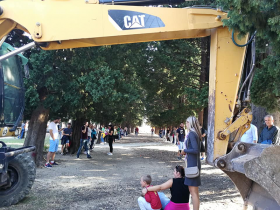
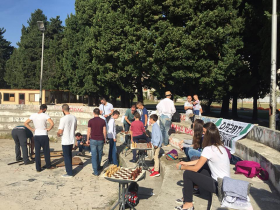
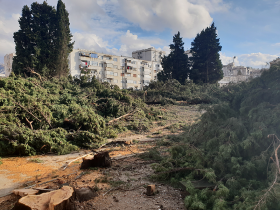
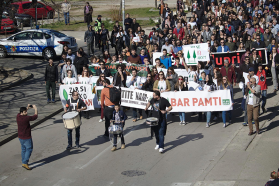



 EXPEDITIO
EXPEDITIO 



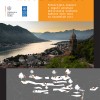


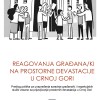
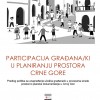
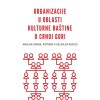
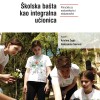


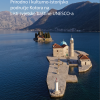

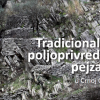
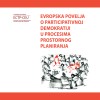

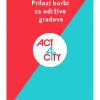
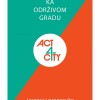
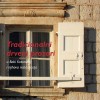

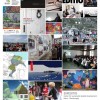

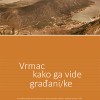







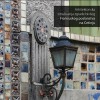




![Smjernice za oživljavanje javnih prostora [izbor dobrih praksi] Smjernice za oživljavanje javnih prostora [izbor dobrih praksi]](/images/resized/images/stories/expeditio/publikacije/Publikacija-Javni-prostori-naslovna_100_100.jpg)
![Budućnost kakvu želimo [The Future We Want] Budućnost kakvu želimo [The Future We Want]](/images/resized/images/stories/expeditio/novosti_exp/Buducnost-kakvu-zelimo-naslovna_100_100.jpg)

![Katalog javnih prostora Boke Kotorske [odabrane lokacije] Katalog javnih prostora Boke Kotorske [odabrane lokacije]](/images/resized/images/stories/expeditio/novosti_exp/javni-prostori-knjiga_100_100.jpg)


